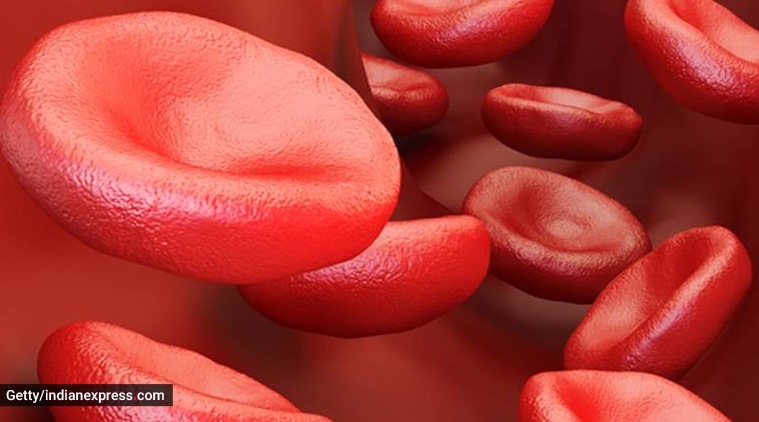
The Indian Express
Blood Cancer Awareness Month: Know about the types, treatments available
Blood cancer accounts for eight per cent of all new cases of cancer diagnosed in India. Of all types of blood cancers, the three most common types that affect the Indian population are lymphoma, leukemia and multiple myeloma
by Lifestyle DeskWritten by Dr Sunil Bhat

Blood cancer typically means malignancies of the blood, bone marrow or lymph nodes that result in uncontrolled blood cell production and altered function. However, misinformation and lack of awareness about blood cancer and its types are the biggest challenges observed today among the Indian population. What most people are unaware of is that blood cancer can be managed, and a patient can have a second chance at life with chemotherapy and other treatments. Some of the patients also require a stem cell transplant, especially patients who cannot be treated with chemotherapy. Every year, the month of September is dedicated to blood cancer awareness.
Blood cancer accounts for eight per cent of all new cases of cancer diagnosed in India. Of all types of blood cancers, the three most common types that affect the Indian population are:
https://images.indianexpress.com/2020/08/1x1.png
*Lymphoma: It is the name for a group of blood cancers that develop in the lymphatic system. The two main types are Hodgkin lymphoma and non-Hodgkin lymphoma.
*Leukemia: It is a blood cancer that develops when normal blood cells become malignant and grow uncontrollably. There are four main types named according to the cells affected (myeloblasts, lymphocytes) and whether the disease is slow or fast-growing (chronic, acute). Leukemia starts mainly from the bone marrow.
*Multiple myeloma: It starts in the bone marrow when plasma cells (a type of blood cell) begins to grow uncontrollably. As the cells grow, they compromise the immune system and impair the production and function of white and red blood cells causing bone disease, organ damage, and anemia among other conditions.
Lymphomas and leukemia affect adults and children both, but Myeloma is a relatively common condition which affects adults
Every year, over one lakh people are diagnosed with blood cancer in India. Be aware of these symptoms:
– In most cases of blood cancer, the patient feels tired and weak. This happens because the number of red blood cells in the blood starts decreasing due to which there is a lack of blood in the person.
– Fever is a common symptom of cancer. The immunity of the cancer patient becomes weak, so the patient often has a fever.
– A person suffering from blood cancer is prone to repeated infections. When leukemia cells develop in the body, then complaints of infection can be seen in the patient’s mouth, throat, skin, lungs, etc.
– People who have cancer tend to have an abnormally low weight. If the body weight is reduced without any obvious cause, then it can be seen as the primary symptom of cancer.
– Pain in bones and joints can be a symptom of not only arthritis but also blood cancer. Blood cancer is a disease in the bone marrow that is found in large amounts around the bones and joints.
– The abnormal formation of leukemia cells in the body prevents the bone marrow from forming healthy blood cells such as platelets. Due to its deficiency, more bleeding problems can be seen from the nose of the patient, during menstruation, gums, etc.
Rate of cure with treatment options
The mainstay of treatment in blood cancers is chemotherapy. However, some patients can also be treated with “targeted” and “immunotherapies”. For a good proportion of patients, cure with the above therapeutic modalities may not be possible and they mostly require blood stem cell transplant to survive.
Both malignant and non-malignant conditions can be treated with a blood stem cell transplant, including Lymphoma, Leukemia, Myeloma and Hodgkin disease and other blood disorders such as Aplastic Anemia and Thalassemia. Sometimes, the only treatment option for survival of a blood cancer patient is with a blood stem-cell transplant. A successful blood stem-cell transplant in 70 to 90 per cent of patients may give them a second chance at life, depending on the disease condition and the donor type.

For a blood stem cell transplant to succeed, it is important that the HLA (Human Leukocyte Antigen) of the donor and patient are as close to identical as possible in order to avoid rejection reactions between graft and patient. Tissue types are passed from parents to children. Only about 30 per cent of the patients in need of a stem cell transplant as life-saving treatment, are able to find a sibling match. The rest 70 per cent depend on finding a matching unrelated donor. This is where blood stem cell registries like DKMS BMST Foundation India come into play by enrolling adult healthy unrelated donors.
Blood stem cell registries help in unrelated donor transplant process that counsel donors, enroll donors, get their HLA typing done, facilitate the search of the donors, and later facilitate the blood stem cell collection and transplant.
To reduce the gap and to ensure each blood cancer patient looking for a matching donor finds one, it is important to each of us to register as a potential blood stem cell donor.
(The author is director and clinical lead, Pediatric Hematology, Oncology and Blood and Marrow Transplantation, Mazumdar Shaw Cancer Centre, Narayana Health City.)
For more lifestyle news, follow us: Twitter: lifestyle_ie | Facebook: IE Lifestyle | Instagram: ie_lifestyle